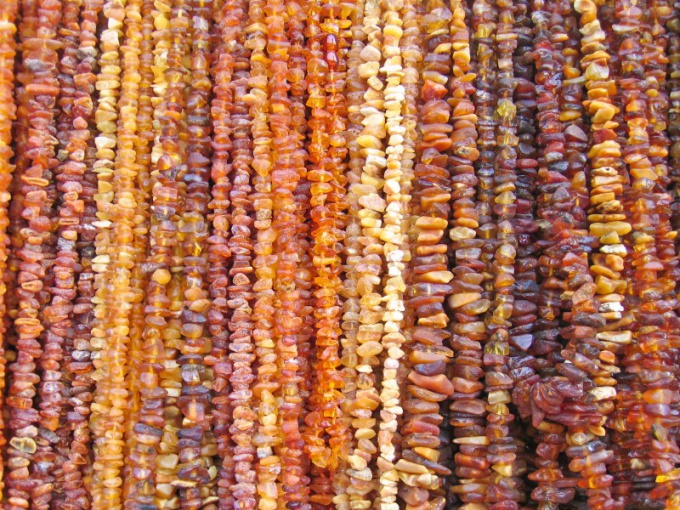Instruction
1
Sprinkle on the stone a drop of acetone or alcohol. If the surface will stain or it will become sticky, so before you dig "young" is not stable amberthat can be extracted from resins of contemporary trees. Keep the acetone on the stone for more than three seconds to amber dimmed by prolonged exposure to chemistry.
2
Light amber chips or shavings. You should feel a pleasant smell, something like the scent of Church incense. Synthetic analogue of amber will exude the smell of burning rubber, accompanied by dark smoke. Mild swipe the knife across the surface of the stone. With natural sprinkling a small crumb, and simulation – spun wool.
3
Pour a glass of water, add 3 tablespoons of salt and drop it on the bottom of a piece of amber. Natural stone needs to rise to the surface. Don't forget to wash after this stone with water, so that it formed a salt crust.
4
RUB the stone to give it a negative charge. If in this state, he will not take even a slight electrifying, so you're holding a fake.
5
Put the amber under UV rays. Under their influence the natural stone will Shine a bluish color. Milk white color distinguishes these artificial stones as ambroid and digging. Synthetic imitation will have any other color.
6
Consider the inclusion (inclusion) present in the stone, paying special attention to the insect trapped in it. Wings of prehistoric bugs and flies should be disclosed, which is a sign of the struggle for life ancient insects stuck in the resin. Counterfeits inside the stone already placed the dead insects, filling their plastic.
Note the appearance of an insect: having even a cursory knowledge of entomology, you can determine that could not get into the stone in connection with inappropriate age, habitat and appearance.
Note the appearance of an insect: having even a cursory knowledge of entomology, you can determine that could not get into the stone in connection with inappropriate age, habitat and appearance.
